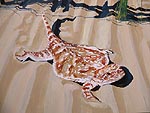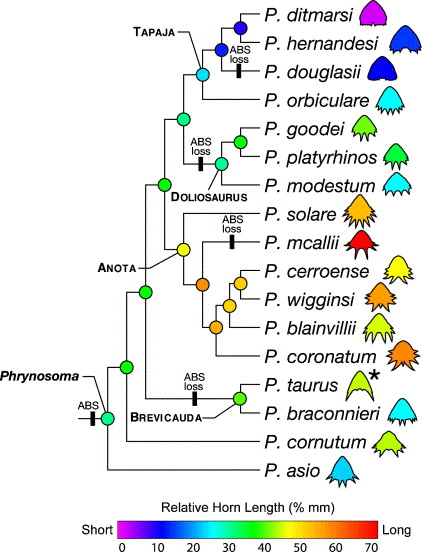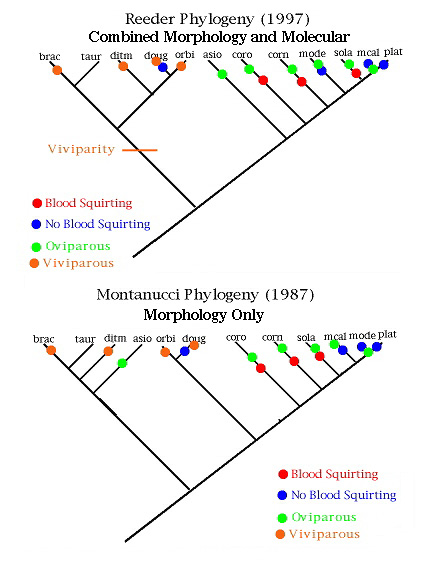Phrynosa Phylogeny
 [5]
[5]
Biology 342 Fall 06
Creating a phylogenitic tree is one common and useful way for
scientists to investigate evolutionary relationships between different
species of the same family based on the similarities between traits
that vary between species. By their nature, phylogenies are proposed,
educated guesses at the relationships between species, and cannot be
proved. Thus, it is often the case that more than one phylogeny can be
proposed for the same family, each phylogeny being equally
parsimonious, and phylogenies are frequently subject to change with new
discoveries. Below are three proposed phylogenies for the horned lizard
family Phrynosoma.
The family Phrynosoma is comprised of 17 different
species, each with a unique morphology and set of traits. The first two
phylogenies focus on twelve members of the family and was constructed
based on information gathered on similarities between species' nuclear
and morphological traits. These phylogenies focus primarily on each
species' ability or inability to squirt blood as a means of self
defense and each species' mode of reproduction, oviparity (laying eggs)
or viviparity (giving birth to live young). [7]
The third phylogeny was constructed based on combined data from nuclear and mitochondrial DNA of all 17 species. The black bars marked "ABS loss" mark the four independent losses of species' ability to squirt blood as an antipredator defense. Silhouettes of each species' uniquely shaped head are shown on the right to demonstrate the various morphological differences between species. The heads are color coded to illustrate the relative horn length of each species. The phylogeny is composed of four proposed clades: Tapaja, Doliosaurus, Anota, and Brevicauda. [5]
 [9]
[9]
